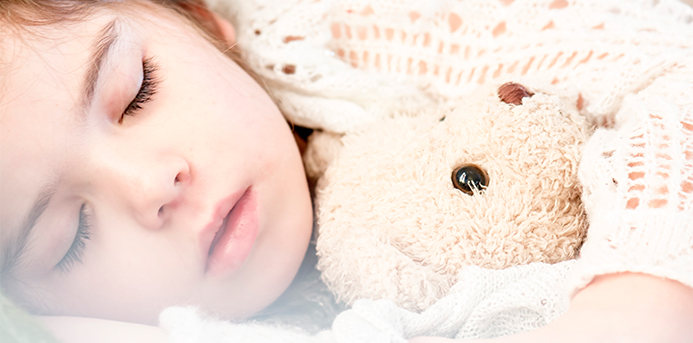There are times — at night and during early mornings — when as a parent you understand the power of cathartic release provided by certain profane parodies of nighttime stories. Because your child … Just. Won’t. Go. To. Sleep. And that means you can’t get rest either.
If you’re one of between 50 and 70 million American adults who suffer from some kind of sleep or wakefulness disorder, what makes things much, much worse, for you is a child who is also sleepless. Sleep-deprived babies keep you up because you need to attend to them, but also trigger worry that keeps you awake even after the child is asleep and when you want to sleep.
De facto, your children’s sleep difficulties become the secondary cause of your insomnia. Sleep deprivation is of course bad in itself to the child — because children need restful slumber in order to be healthy — and it undermines your health and happiness, too, both of which are key to your ability to be there for your children.
Among other things, sleep deprivation has been proven to worsen the capacity for emotional regulation (things seem worse to us than they are in reality when we are exhausted). Getting good sleep prevents the onset of diseases and illnesses and helps our bodies fight infections. Thanks to rest, our minds are better able to retain memories, to concentrate, and keep us calm.
Recommended nightly sleep requirements by age are as follows: newborns need 14 to 17 hours of sleep, infants 12 to 15, toddlers 11 to 14, preschool children 10 to 13, school age children 9 to 11, and teens 8 to 10.
How can you as a parent help them (and therefore yourself, too) get rest at night?
1. Be Consistent
A healthy, regular, dependable bedtime routine is key — even on the weekends. Consistency is an exhausted parent’s friend. Sticking to a schedule will helps sleepers maintain and stick to the body’s internal clock.
2. Keep It Dark
Make sure that your child’s bedroom is dark, cool and quiet. Slightly cooler temperatures, darkness and quiet at night bring on relaxation and drowsiness.
3. Go It Alone
You may have already taught your child to sleep alone. If not, do that. Use strategies such as developing a soothing and pleasant bedtime routine, making your child’s bedroom a fun place that she or he loves, and other tricks, in order to make your child’s sleep independent of your presence. This way, when he or she wakes up in the middle of the night, they won’t need you to put them back to sleep.
4. Seize the Day
The children’s daytime routine also matters. Make sure that your child gets plenty of exercise or physical activity on a regular basis. The benefits affect sleep and many other aspects of health. According to a 2013 survey by the National Sleep Foundation, vigorous, moderate and light exercisers are significantly more likely to report that they had a good night’s sleep on work nights than people who do not exercise (56-67 versus 39 percent).
5. No Caffeine…
Avoid giving your child caffeine and sugar in the afternoons and evenings.
6. …And No Devices
Do not allow the use of electronics two hours prior to bedtime. The blue-spectrum light that smartphone and iPad screens give off has energizing properties. (Same, by the way, goes for the blue light emitted by some energy efficient light bulbs.) Consider using Night Shift settings on your devices or apps that minimize the blue light on electronics several hours before your child’s bedtime.
7. Pay Attention to Sleep Positions
Take note of the sleeping positions your child assumes, and pick the mattress accordingly. If your child’s a side sleeper, for example, you need a mattress that best supports a healthy spine alignment in a fetal position.
8. Meditate
You might be surprised by how much your child might take to elements of friendly meditation practice. Explore teaching your child the basics of a mindfulness meditation practice — make it fun. The “mind-calming practice that focuses on breathing and awareness of the present moment” helps to diminish restlessness and promotes restful sleep at night. Meditation can be as simple as counting to 100 or observing one’s breath.
9. See a Specialist
Sometimes insomnia is brought on by underlying conditions. If your child suffers from sleepwalking, PTSD or sleep apnea, the long-term strategy has to start with taking her or him to see a specialist. Some underlying medical conditions can be helped either with behavioral therapy or a course of prescription medication.
10. Remember, You Know What Works Best
Draw on your observations: What has worked well in soothing and calming your child? Whether it’s a certain bedtime story or gentle touch, incorporate what works that at bedtime.
With these simple steps, sleepy children and sleep-filled nights for all of you can be within reach.
More from Make It Better:
- The Truth About Blue Light: Just How Harmful Is It?
- Raising Kids to Be Money Geniuses (and Give Back Too)
- The Benefits of Family Dinner (and 5 Easy Ways to Make It a Priority)

Agnes Green is a researcher for the sleep science site Tuck Sleep. She holds two master’s degrees in the social sciences from the University of Chicago and Northwestern University. She sleeps most soundly after a kettlebell workout, with breeze wafting in through a cracked window, and on a medium-firm mattress in Portland, Oregon.

